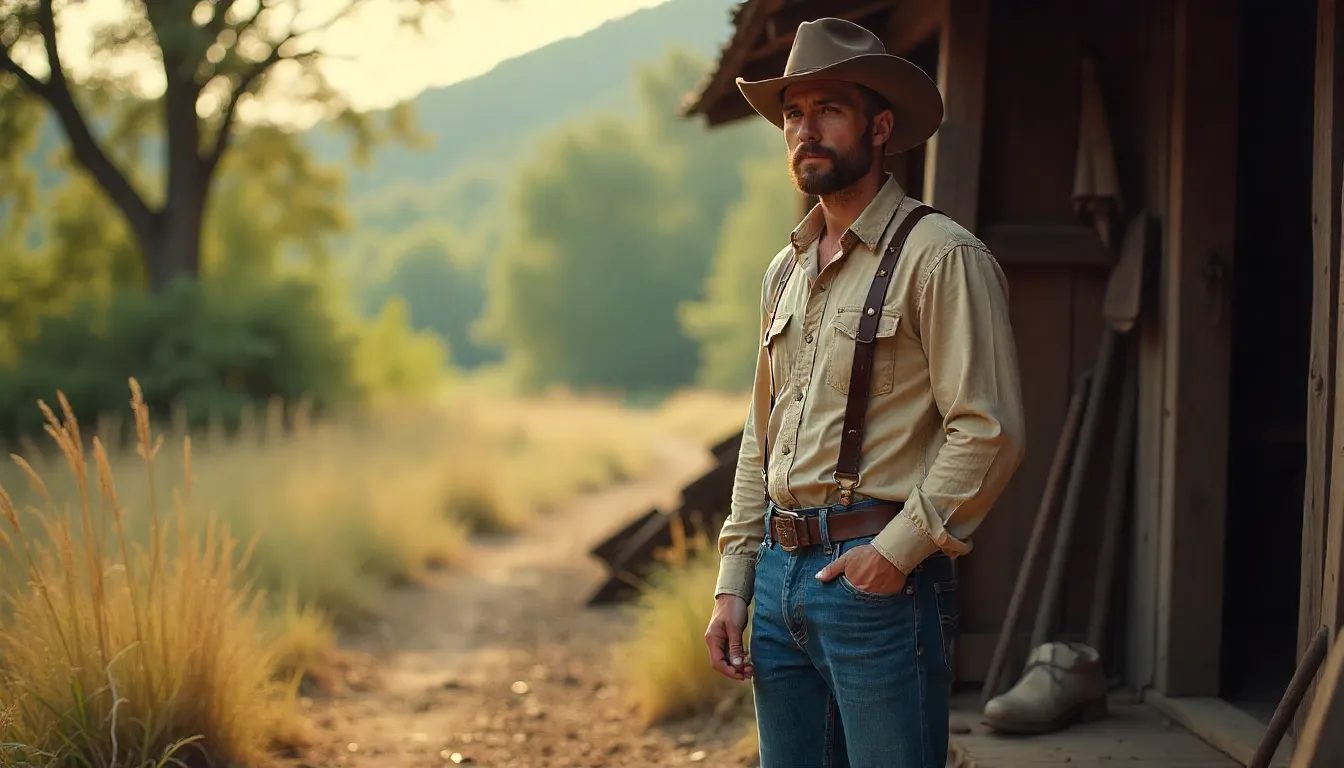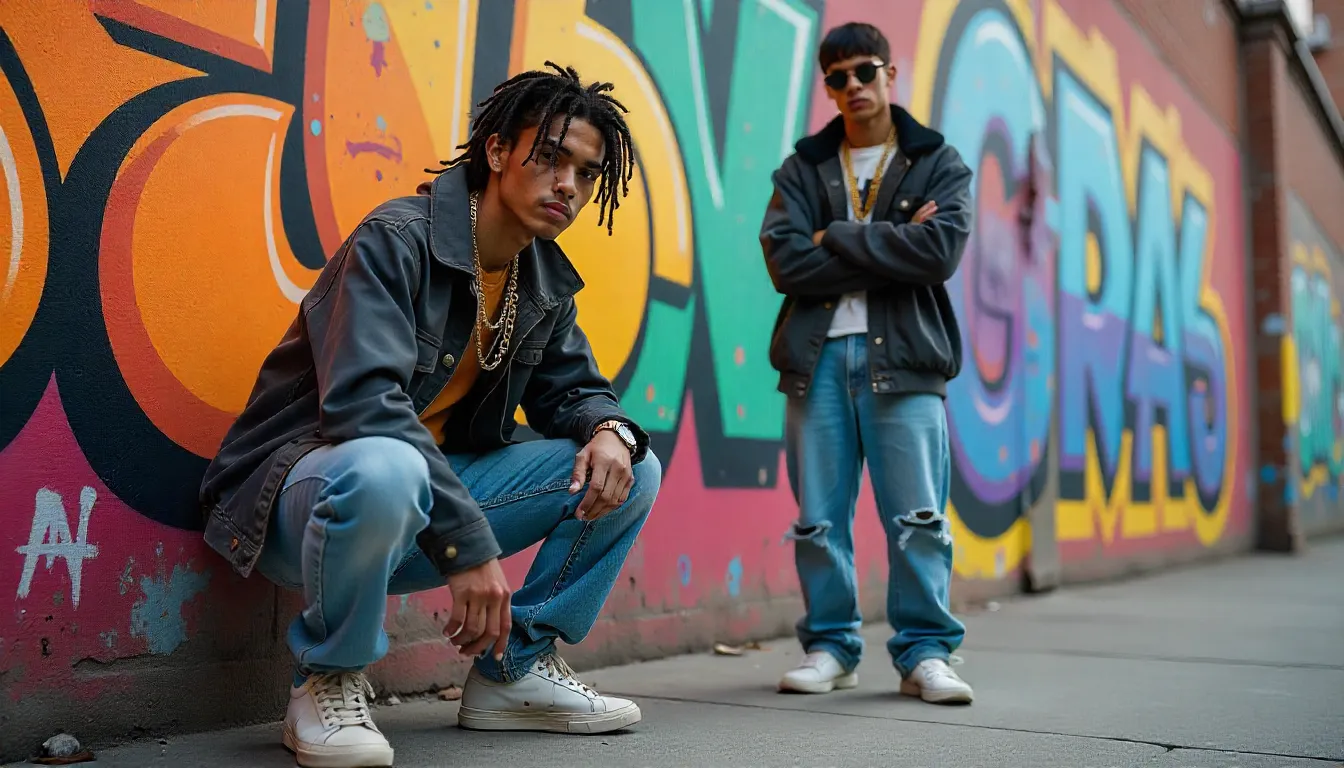From Baggy to Slim: The Evolution of Jean Silhouettes – A Complete Fashion Timeline
The fascinating journey of denim silhouettes tells the story of cultural rebellion, practical innovation, and cyclical fashion trends that have shaped how we dress for over a century. From the loose-fitting workwear of the 1870s to today’s diverse array of cuts and styles, jean silhouettes have evolved dramatically, reflecting societal changes, musical movements, and shifting ideals of beauty and comfort.
Understanding this evolution isn’t just about fashion history—it’s about recognizing how clothing choices mirror our collective values, economic conditions, and cultural identity. Whether you’re a fashion enthusiast, vintage collector, or simply curious about why certain cuts dominate different eras, this comprehensive guide will walk you through the remarkable transformation of denim silhouettes.
The Foundation Years: 1873-1950s
The story begins in 1873 when Levi Strauss teamed up with tailor Jacob Davis to create what would become the first pair of denim pants reinforced with copper rivets at key stress points. These original jeans were designed with a practical, loose-fitting silhouette that prioritized durability and movement for laborers, miners, and cowboys.
During these early decades, denim maintained its utilitarian roots with straight-leg cuts that allowed for maximum mobility. The silhouette was neither fashionable nor form-fitting—it was purely functional. Women rarely wore jeans during this period, as societal norms dictated more traditional feminine attire.

The 1940s and 1950s marked the first significant shift in jean silhouettes. The skinny jean silhouette first appeared in the form of cigarette pants (think high-waist, slim-leg), popularized by the likes of Audrey Hepburn and Marilyn Monroe. However, these slim styles were primarily found in other fabrics, while denim remained relatively loose and practical.
The Slim Revolution: 1960s-1970s
The 1960s introduced a cultural revolution that began transforming denim from workwear to fashion statement. Young people embraced jeans as symbols of rebellion against traditional dress codes, and manufacturers began experimenting with different fits and cuts.
Then in the 1970s, denim represented a shift towards a more liberated, sexually expressive culture, epitomized by your cool it-girls like Farrah Fawcett and Lauren Hutton. Slimmer silhouettes and daring styles gained traction. This decade saw the emergence of fitted jeans that hugged the body more closely than ever before, marking the beginning of denim’s transformation into a fashion-forward garment.
Slim, high‑waist bootcut jeans were often paired with flowing blouses and romantic details reminiscent of 1970s‑inspired romantic silhouettes, which are again resurging in modern fall fashion.
The introduction of stretch fabrics and improved manufacturing techniques allowed designers to create jeans that were both form-fitting and comfortable. Boot-cut styles also gained popularity during this period, offering a compromise between slim and flared silhouettes.
The Baggy Boom: 1980s-1990s
The 1980s brought dramatic changes to fashion, and denim silhouettes swung dramatically toward looser, more relaxed fits. This shift coincided with the rise of hip-hop culture and the growing influence of street fashion on mainstream style.
Fit: Loose, baggy fits were very popular, especially for men. This was a stark contrast to the tight fits of the 80s. However, this transition actually began in the late 1980s and reached its peak in the 1990s. The 90s were marked by the rise of hip-hop culture, which played a central role in popularizing baggy jeans. Rappers and hip-hop groups adopted this style for its rebellious and comfortable nature.
The baggy jean movement represented more than just fashion—it was a cultural statement. Brands like JNCO became synonymous with extremely wide-leg jeans that could measure up to 50 inches in circumference at the hem. The 1990s ushered in another era in denim culture and styling with the emergence of baggy jeans and dungarees. Pop groups such as TLC, the Spice Girls and Destiny’s Child helped boost these styles amongst their fans.

Key characteristics of 1990s baggy jeans included:
- Extremely loose fits through the leg
- Low-rise waistlines
- Wide leg openings
- Oversized proportions that emphasized comfort over form
- Bold washes and distressing effects
The Skinny Revolution: 2000s-2010s
The turn of the millennium brought another dramatic shift in denim silhouettes. In 2000, skinny jeans made a comeback thanks to fashion icon, Kate Moss, garage rock and the formation of indie rock in popular music culture. This marked the beginning of what would become the longest-lasting denim trend in modern fashion history.
The 2000s were a decade to experiment with skinny jeans. The emo style brought all the colours of the rainbow to the fit. The regrettable low-rise style was a mark of an extremely skinny body ideal and belly button piercing era. The early 2000s were characterized by ultra-low-rise cuts that sat well below the natural waistline, creating a distinctive Y2K aesthetic.
The emo movement in the late 2000s further propelled skinny jeans into the spotlight, making them fashionable for a broader audience, transcending gender norms. This subcultural influence helped skinny jeans transition from niche fashion statement to mainstream wardrobe staple.
The skinny jean phenomenon reached its peak in the 2010s, when skinny jeans peaked in popularity. During this period, the silhouette became virtually ubiquitous, worn by people of all ages and across all fashion categories.
The Modern Era: 2020s and Beyond
Starting in the late 2010s, straight legged jeans would increase in popularity and lead to a steady decline in skinny jeans popularity. Stay-at-home orders during the COVID-19 pandemic accelerated a trend toward more comfortable clothing options.
The pandemic fundamentally changed how we think about clothing, prioritizing comfort and versatility over restrictive fashion trends. This shift has led to a renaissance of relaxed fits and a return to some of the looser silhouettes that dominated earlier decades. Wide‑leg, mom, and straight‑cut jeans pair beautifully with minimalist flats and loafers—see how to capture on‑trend styling like styling wide‑leg or straight jeans with Parisian flats and loafers in our street style guide.
Today’s denim landscape offers unprecedented variety:
- Wide-leg jeans reminiscent of 1970s styles
- Straight-leg cuts that echo classic Americana
- Mom jeans with high waists and relaxed fits
- Boyfriend jeans that borrow from men’s sizing
- Flare and bootcut styles making a comeback
Cultural Influences on Jean Silhouettes
The evolution of jean silhouettes cannot be separated from broader cultural movements. Each major shift in denim design has corresponded with significant social, musical, or economic changes:

Music and Subcultures: From the rock rebellion of the 1960s to hip-hop’s embrace of baggy styles in the 1990s, music has consistently driven denim trends. The emo and indie rock movements of the 2000s popularized skinny jeans, while today’s diverse musical landscape supports equally diverse denim choices.
Economic Factors: Economic conditions have influenced both the production and popularity of different cuts. The practical, durable designs of the Great Depression era contrasted sharply with the experimental, fashion-forward approaches of more prosperous decades.
Gender Norms: The evolution of jean silhouettes reflects changing attitudes toward gender expression and body image. The unisex appeal of baggy jeans in the 1990s and the gender-neutral skinny jean trend of the 2000s demonstrate how denim has often challenged traditional fashion boundaries.
The Technology Behind the Transformation
Advances in textile technology have enabled many of the silhouette changes we’ve witnessed. In 1962, Levi Strauss introduced their own pre-shrunk jeans (Lee and Wrangler jeans had already long been pre-shrunk); these did not shrink further after purchase, allowing the consumer to purchase a correctly fitting size.

Modern innovations include:
- Stretch denim blends that allow for form-fitting silhouettes without sacrificing comfort
- Advanced washing and finishing techniques that create different visual effects
- Sustainable production methods that respond to environmental concerns
- Digital pattern-making that enables precise fit modifications
Jean Silhouette Comparison Table
Era | Dominant Silhouette | Key Features | Cultural Influences | |
|---|---|---|---|---|
1870s-1950s | Straight, utilitarian | Loose fit, practical design | Workwear origins | |
1960s-1970s | Slim, fitted | Body-hugging, boot-cut variations | Youth rebellion, sexual liberation | |
1980s-1990s | Baggy, oversized | Wide legs, low-rise, extreme proportions | Hip-hop culture, grunge movement | |
2000s-2010s | Skinny, form-fitting | Ultra-slim, low to mid-rise | Indie rock, celebrity influence | |
2020s+ | Diverse, comfortable | Wide variety, high-rise comeback | Pandemic comfort, sustainability |
The Psychology of Silhouette Preferences
Understanding why certain silhouettes dominate different periods reveals deeper psychological and social factors. Baggy jeans often emerge during times of economic uncertainty or social rebellion, offering both physical and psychological comfort. Slim fits tend to dominate during periods of body consciousness and media influence on beauty standards.
The current trend toward diverse silhouettes reflects a more inclusive approach to fashion, where personal comfort and individual expression take precedence over conformity to a single ideal.
Shopping for Different Silhouettes: A Practical Guide
When choosing jean silhouettes, consider these factors: When choosing jean silhouettes, consider sustainable denim options and fit quality—the article on best denim basics and sustainable brands outlines leading labels that marry comfort with enduring style.
Body Type Considerations: Different cuts flatter different body types, but the most important factor is personal comfort and confidence.
Lifestyle Needs: Active lifestyles may benefit from stretchy, flexible cuts, while professional environments might call for more tailored silhouettes.
Trend Awareness: Understanding current trends helps you make informed choices about which styles will feel contemporary and which might appear dated.
Straight‑leg and high‑rise mom jeans have become staple pieces even in smart‑casual contexts, offering more polished options like tailored denim for smart‑casual office looks explored in our office style guide.
The Future of Jean Silhouettes
As we look toward the future, several trends are emerging:
- Sustainable and eco-friendly production methods
- Customizable fits using digital technology
- Gender-neutral designs that prioritize comfort and inclusivity
- Adaptive clothing features for people with disabilities
The cyclical nature of fashion suggests that we’ll continue to see revivals of past silhouettes, but with modern updates that reflect contemporary values and technological capabilities.
Frequently Asked Questions About Gourmand Perfumes
The evolution of jean silhouettes from baggy to slim and back again tells a fascinating story of cultural change, technological advancement, and the eternal human desire for both comfort and self-expression. As we continue to navigate changing social norms and lifestyle needs, denim will undoubtedly continue adapting, proving once again why jeans remain one of the most enduring and versatile garments in fashion history.
Understanding this evolution helps us appreciate not just where denim has been, but where it might go next. Whether you prefer the relaxed comfort of baggy styles or the sleek lines of slim cuts, you’re participating in a rich fashion tradition that reflects the diverse, ever-changing nature of human culture and creativity.